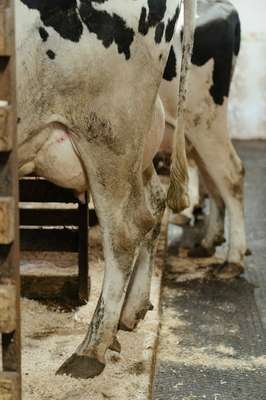Health Alert: Experts Reveal the Shocking Truth About Raw Milk
Have you ever wondered if raw milk is really as good as some people say? It's becoming more popular, especially among those of us who want to go back to simpler, more natural foods. But before you pour that glass, it’s important to know what the experts have to say.
Raw milk might remind you of the good old days, but it comes with some hidden risks, especially as we get older. Health experts are raising concerns, and it's important to know what you're getting into before making that choice. Here's why you might want to think twice before reaching for that glass of raw milk.
Raw milk is simply milk that hasn’t been pasteurized. Pasteurization is a process where milk is heated to kill harmful bacteria that could make you sick. Some people believe raw milk is healthier because it hasn’t been processed, but health experts say that’s not quite the case. In fact, it’s the pasteurization process that makes milk safe for us to drink.
Meghan Davis, a health expert from Johns Hopkins University, explains that pasteurization protects us from dangerous bacteria, like E. coli, Salmonella, and Listeria. These bacteria can cause serious illness, and it’s not just about the milk coming from one cow.
You might have heard that raw milk is better for you nutritionally. But that’s a common misconception. Jamie Nadeau, a registered dietitian, points out that there’s almost no difference between raw and pasteurized milk when it comes to nutrition. Both provide important nutrients like calcium, protein, and vitamin D. The key difference? Pasteurized milk is much safer to drink.
Some people claim that the bacteria in raw milk can help your gut, but that’s a bit misleading. While it’s true that probiotics, the good bacteria found in yogurt or kefir, are beneficial for your digestive health, the bacteria in raw milk aren’t the same.
The bacteria in raw milk can actually make you sick, while the probiotics in yogurt and other fermented foods are carefully managed to be safe and beneficial.
Health organizations like the Food and Drug Administration (FDA), Centers for Disease Control and Prevention (CDC), and American Academy of Pediatrics all advise against drinking raw milk. It’s not just a matter of getting sick from one glass—raw milk can be dangerous for everyone, especially older adults, young children, and pregnant women. And it’s not just bacterial contamination we have to worry about.
With the rise of avian flu among cattle, the U.S. Department of Agriculture has begun testing raw milk for the virus, adding another risk to drinking raw milk.
If you’re looking for milk that’s a bit less processed but still safe to drink, try non-homogenized pasteurized milk, also known as "cream top" milk. This type of milk is pasteurized to remove harmful bacteria but doesn’t go through the extra step of homogenization, which breaks down the fat. It’s a good option for those who want a more natural taste but still want to be sure they’re drinking something safe.
We know it’s tempting to go back to the good old days and try raw milk, but the health risks just aren’t worth it. Choosing pasteurized milk is the safest way to go. And if you’re looking to improve your gut health, there are plenty of safe options like probiotic-rich foods or supplements.
Remember, it’s nice to embrace the past, but we also need to appreciate the health improvements we have today. Let’s honor the wisdom of yesterday while making the most of the safety measures that protect us now.

We’d love to hear your thoughts! Have you tried raw milk, or do you have concerns about the safety of food products? Join the conversation in the comments below, and let’s support each other in making informed health choices!
Raw milk might remind you of the good old days, but it comes with some hidden risks, especially as we get older. Health experts are raising concerns, and it's important to know what you're getting into before making that choice. Here's why you might want to think twice before reaching for that glass of raw milk.
Raw milk is simply milk that hasn’t been pasteurized. Pasteurization is a process where milk is heated to kill harmful bacteria that could make you sick. Some people believe raw milk is healthier because it hasn’t been processed, but health experts say that’s not quite the case. In fact, it’s the pasteurization process that makes milk safe for us to drink.
Meghan Davis, a health expert from Johns Hopkins University, explains that pasteurization protects us from dangerous bacteria, like E. coli, Salmonella, and Listeria. These bacteria can cause serious illness, and it’s not just about the milk coming from one cow.
When milk is processed from many cows, it increases the chance that harmful bacteria could be present, and pasteurization helps eliminate that risk.
You might have heard that raw milk is better for you nutritionally. But that’s a common misconception. Jamie Nadeau, a registered dietitian, points out that there’s almost no difference between raw and pasteurized milk when it comes to nutrition. Both provide important nutrients like calcium, protein, and vitamin D. The key difference? Pasteurized milk is much safer to drink.
Some people claim that the bacteria in raw milk can help your gut, but that’s a bit misleading. While it’s true that probiotics, the good bacteria found in yogurt or kefir, are beneficial for your digestive health, the bacteria in raw milk aren’t the same.
The bacteria in raw milk can actually make you sick, while the probiotics in yogurt and other fermented foods are carefully managed to be safe and beneficial.
Health organizations like the Food and Drug Administration (FDA), Centers for Disease Control and Prevention (CDC), and American Academy of Pediatrics all advise against drinking raw milk. It’s not just a matter of getting sick from one glass—raw milk can be dangerous for everyone, especially older adults, young children, and pregnant women. And it’s not just bacterial contamination we have to worry about.
With the rise of avian flu among cattle, the U.S. Department of Agriculture has begun testing raw milk for the virus, adding another risk to drinking raw milk.
If you’re looking for milk that’s a bit less processed but still safe to drink, try non-homogenized pasteurized milk, also known as "cream top" milk. This type of milk is pasteurized to remove harmful bacteria but doesn’t go through the extra step of homogenization, which breaks down the fat. It’s a good option for those who want a more natural taste but still want to be sure they’re drinking something safe.
We know it’s tempting to go back to the good old days and try raw milk, but the health risks just aren’t worth it. Choosing pasteurized milk is the safest way to go. And if you’re looking to improve your gut health, there are plenty of safe options like probiotic-rich foods or supplements.
Remember, it’s nice to embrace the past, but we also need to appreciate the health improvements we have today. Let’s honor the wisdom of yesterday while making the most of the safety measures that protect us now.
Key Takeaways
- Raw milk is unpasteurized milk, which health experts warn can contain harmful pathogens that may cause serious diseases.
- Despite beliefs that raw milk is less processed; and more nutritious, dietitians confirm that pasteurized milk is just as nutritious and far safer to consume.
- Leading health organizations, including the FDA, CDC and the American Academy of Pediatricians, advise against the consumption of raw milk due to the significant health risks it poses.
- Pasteurization is the recommended process for ensuring milk safety, as it effectively kills bacteria and viruses, mitigating the health risks associated with raw milk consumption.
We’d love to hear your thoughts! Have you tried raw milk, or do you have concerns about the safety of food products? Join the conversation in the comments below, and let’s support each other in making informed health choices!






